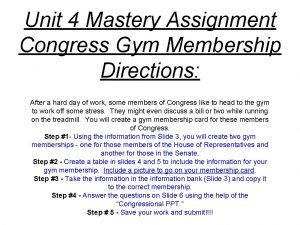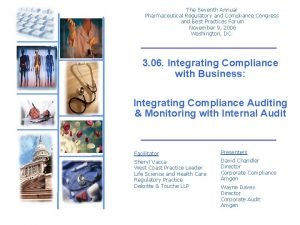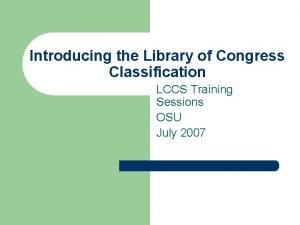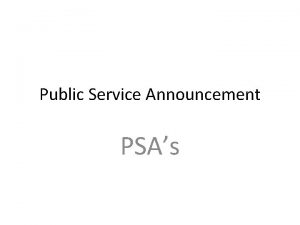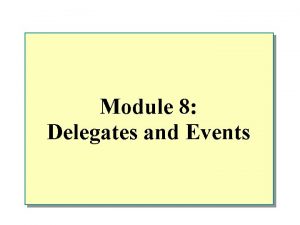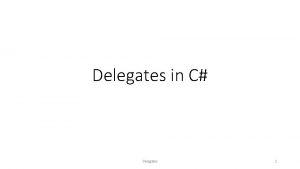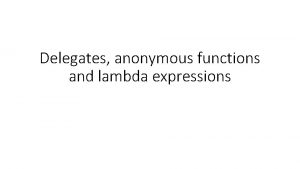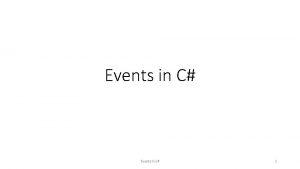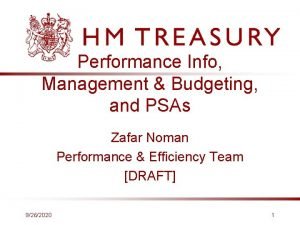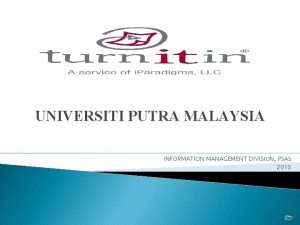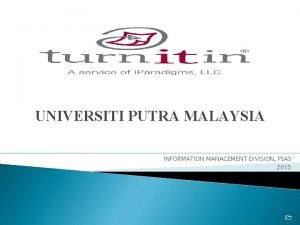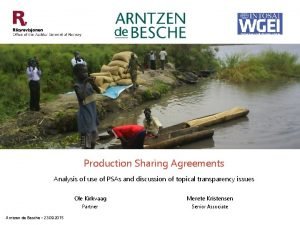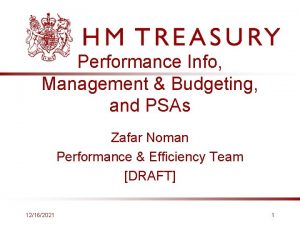What is Congress PSAs National Delegates Congress is















- Slides: 15


What is Congress? PSA’s National Delegates’ Congress is made up of delegates representing all PSA members – it’s the highest decision making body in PSA (above the President, the Secretaries, and the Board). It is held every two years and has the power to set the overall policy direction of the PSA and approve changes to the PSA Rules (Rule 54).

8 steps to the process You have an idea for change You convince fellow members to support your idea An authorised committee agrees to propose your motion You write the idea in ‘formal w language’ as a motion You explain what your notice of motion is about You send the motion to the National Secretaries at least 4 months before Congress. Your notice of motion is circulated You try to persuade members from elsewhere in the union to support it

1. You have an idea for change • You have an idea for changing the PSA’s policies, Rules or administrative processes • ‘Notices of motion’ to Congress are formal proposals for change that require the decision of Congress. • Keep in mind that there may be other ways to achieve the result you seek that don’t require a decision of Congress.

2. You convince fellow members to support your idea • You will need support to get your idea to Congress so you’ll need to talk and communicate with other members about why you think your idea is a good one. • You should start by talking to members in your workplace or within your networks or Te Rūnanga to see if they support your idea and are willing to back taking it to the next level. • When you take the idea to the next level a 2 -3 discussion paper or proposal paper is a good way to put all the arguments in one place. You may have had to write or contribute to similar types of documents (like memos or briefings) in your work.

3. The next level: an authorised committee agrees to propose your motion • Only the executive board, Te Rūnanga, sector committees, clusters and formal networks can put forward notices of motion to Congress (Rule 57 (1)(f)) • You will need a recorded decision by the committee involved proposing the motion to go to Congress.

4. You need to write the idea in ‘formal language’ as a motion • New policies need to be clearly worded to convey the intent of the policy and rule changes need to refer to the part of the Rules you want to change and specify the wording to be inserted or replaced. • The PSA policy team can help members with this. • For example: If you want instruct the PSA to give a free banana to all members when they join you could do this as a policy so the motion could read: “That PSA give all new members a banana when they become financial members. ” • If you wanted to change the Rules to achieve this it might read: “That the PSA amend the Rules by inserting a new Rule 86 to read: ‘Each new member shall be entitled to one banana when they become a financial member. ’”

Lets use the PSAY current motion as a proper example Part 8 Executive Board, Rule 42 Members Insert “A youth representative” --Part 6 Sector Governance, Rule 32 Sector committees Insert “The inclusion of a designated youth representative”

5. You explain what your notice of motion is about • We need to explain why the motion is a good idea in something called the rationale. • You need to put these thoughts in writing, because when the notice of motion is circulated around other members and parts of PSA for their consideration, they will need the information to decide how they might vote, as well as ask questions about it for clarification. • A rationale ends up in the Congress papers and should be succinct and to the point.

6. You send the motion to the National Secretaries at least 4 months before Congress. • The Secretaries ask members if they want to talk about any items at Congress about 6 months before Congress (Rule 56 1 a) – or in other words, they put out a call out for Notices of Motion and items for business for the Congress earlier in the year they are held. Congresses are held every two years (Rule 55 Part 1). • The authorized committee must put the motion in at least 4 months before Congress (Rule 56 1 c) • There are certain deadlines we have to meet in the months before Congress. The dates can seem quite early. They are set in advance so there is plenty of time to circulate and discuss possible notices of motion at Congress.

6. (Part 2) Your notice of motion is circulated • Once the notices of motions are lodged they and their supporting rationale will be sent out to Congress delegates to help start discussions. This is about 3 -4 months before Congress (Rule 56(1)(c)) • The PSA Board may also have a view on any notices of motion that are on the agenda and any recommendations they have will be in the information sent out (Rule 57(1)(i) and Part 6 Regulation 20. 1). • Amendments to motions can also be put forward at least 2 months before Congress, and the amendments will then be sent around Congress delegates at least 1 month before Congress (Rule 56(1) (d)) • If necessary motions can also be amended from the floor

7. You try to persuade members from elsewhere in the union to support it • Through PSAY and other channels, we can start figuring who might be good to approach to present and talk to about the motion. • Member meetings, sector committee discussions, Hui Taumata, network meetings, delegate meetings and conferences prior to Congress might be good places

8. You discuss and vote on the motion at Congress. • This is the big chance to talk to delegates face to face at the conference venue. Two main chances are: v. Workshops that are held for delegates in each sector to discuss the notices of motion v. Whole-conference sessions (called plenaries)

9. If all goes well, your motion passes!

 Welcome all delegates
Welcome all delegates Welcome all delegates
Welcome all delegates Welcome to all delegates
Welcome to all delegates Oie delegates
Oie delegates Honorable chairs and fellow delegates
Honorable chairs and fellow delegates Welcome to all delegates
Welcome to all delegates National children's science congress projects ideas
National children's science congress projects ideas National unification and the national state
National unification and the national state House of representatives gym
House of representatives gym Pharmaceutical regulatory and compliance congress
Pharmaceutical regulatory and compliance congress Pharmaceutical compliance congress
Pharmaceutical compliance congress Congress of vienna conservatism
Congress of vienna conservatism Library of congress
Library of congress Chapter 23 section 5 the congress of vienna
Chapter 23 section 5 the congress of vienna Library of congress packard campus
Library of congress packard campus First continental congress convenes
First continental congress convenes








